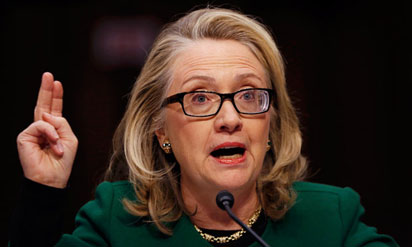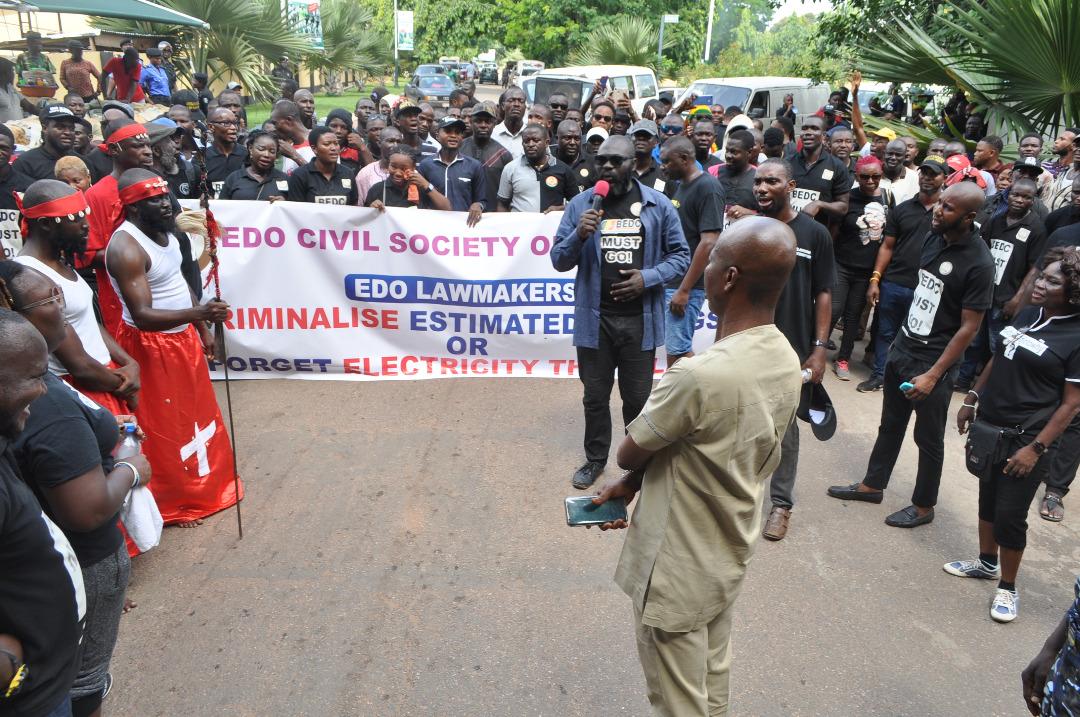Many books have been written about the way racial differences among feminists both divided and pushed feminist thinking and practice forward over the past several decades. In the 2016 election, however, it was not race but generation that was the dynamic factor among left-leaning women.
Women like me, who experienced many cultural battles in the “gender wars” firsthand – from the first scornful comments that journalists had heaped on “women’s libbers”, to the public shaming of Anita Hill, to the renewed threats to bodily rights that we thought we had won decades earlier – brought to the 2016 campaign a personal knowledge of the fragility of feminist accomplishments and an identification with Hillary that was deeper and longer than any current headlines.
We may have winced – as I did – when Madeleine Albright quoted a coffee-cup version of feminism or Hillary said “deal me in”. But we understood that behind every seeming appeal to “sisterhood” was the history of what was indeed a revolution – and one that was far from over. We knew the role Hillary had played in that revolution, and the price she had paid for it.
Many of us, too, had followed Clinton through the course of her public career, had read her autobiography, and knew very well that the accusation that she had come to issues concerning racial and economic justice late and “for political purposes” was among the most extraordinary fabrications of the campaign.
Many younger women, on the other hand – no less feminist, no less committed to gender equality – had formed their ideas about “the Clintons”, as Savannah Barker reminds us, in the shadow of 20 years of relentless personal and political attacks. Few of them – as I know from decades of teaching courses on feminism, gender issues, and the social movements of the 60s – were aware of the “living history” (to borrow Hillary’s phrase) that shaped the woman herself.
These young women weren’t around when the GOP, appalled that liberals like the Clintons had somehow grabbed political power, began a series of witchhunts that have never ended. (Hillary was correct: it has been a “vast rightwing conspiracy”, from the Spectator magazine’s “Arkansas Project”, designed specifically to take Bill Clinton down, to Kenneth Starr’s relentless digging into Bill’s private life, to the Benghazi and email investigations.)
I knew what one of my students meant when I asked her how millennial feminists saw Hillary and she said ‘a white lady’
They hadn’t experienced a decade of culture wars in which feminists’ efforts to bring histories of gender and race struggle into the educational curriculum were reduced to a species of political correctness. They didn’t witness the complicated story of how the 1994 crime bill came to be passed or the origins of the “super-predator” label (not coined by Hillary and not referring to black youth, but rather to powerful, older drug dealers).
It isn’t necessary, of course, to have firsthand knowledge of history in order to have an informed idea of events and issues. When it came to Hillary Clinton, however, sorting out fact from politically motivated fiction was a difficult task, particularly if one’s knowledge was filtered through the medium of election-year battles.
The 2016 election was no academically rigorous history course; it was dominated by versions of Hillary Clinton constructed by her political opponents and transmitted by reporters who usually don’t see offering context as their job and don’t have the time (or, for some, the inclination) to sort fact from fiction. And then, too, after decades of harsh schooling in the ways of politics and the media, Hillary herself was no longer the outspoken feminist who chastised reporters when they questioned her life choices, but a cautious campaigner who measured her words with care.
I knew just what one of my graduate students meant when I asked her how millennial feminists saw Hillary and she said “a white lady”. A white woman herself, she wasn’t referring to the colour of Hillary’s skin, or even her racial politics, but rather what was perceived as her membership in the dominant class, all cleaned up and normalised, aligned with establishment power rather than the forces of resistance, and stylistically coded (her tightly coiffed hair; her neat, boring pantsuits; her circumspection) with her membership in that class. When I looked at Hillary, I saw someone very different – but I understood the basis for my student’s perception.
Any rift between feminist generations, however, would almost certainly have been healed by Donald Trump’s outrageous comments and behavior, had younger progressives not become bonded, during the primary, to a Democratic male hero who both supported the issues they were most passionate about and offered young women independence from the stale and, in their view, defunct feminist past. These young women weren’t going to rush to order a plastic “woman card” for a candidate that had been portrayed by their hero as a hack of the establishment. They didn’t believe in sisterhood– a relic of a time when, as they had been told (often in women’s studies courses) privileged, white feminists clasped hands in imagined gender solidarity, ignoring racial injustice and the problems of the working class.
They didn’t want to be dealt any cards at a bridge game organised by Gloria Steinem or Madeleine Albright – or Hillary Clinton. They wanted Bernie Sanders.
Before I go any further, let me put my own cards on the table. The destruction of Hillary Clinton, I firmly believe, while propelled by a perfect storm of sexism, partisan politics and media madness, was bookended by two immensely powerful assaults. One was the inappropriate, inaccurate and inflammatory interference in the general election by FBI director James Comey. The other occurred much earlier, during the primaries, but its consequences are felt even today. I know I will make some of my younger feminist colleagues (and other left leaners) furious, which was distressing to me then, and still is.
These people, in so many ways, are my natural colleagues, and most are as upset as I am by Trump’s victory. But they played a big role in the thin edge (not a landslide, as Trump would have us believe) that gave Trump the election. For while Trump supporters hooted and cheered for their candidate, forgiving him every lie, every crime, every bit of disgusting behaviour, too many young Democrats made it very clear (in newspaper and internet interviews, in polls, and in the mainstream media) that they were only voting for Hillary Clinton as the lesser of two evils, “holding their noses”, tears still streaming down their faces over the primary defeat of the person they felt truly deserved their votes. Some didn’t vote at all. And as much as I am in agreement with many of his ideas, Bernie Sanders splintered and ultimately sabotaged the Democratic party – not because he chose to run against Hillary Clinton, but because of how he ran against .
Sanders often boasted about the importance of the issues rather than individuals, of not playing dirty politics or running nasty ads in his campaign. And it’s certainly true that he didn’t slime Hillary by bringing Bill’s sexual accusers forward or by recommending that she be put in jail, as Trump did. He also seemed, at the beginning of the primary season, to be refreshingly dismissive about the “email scandal”: “Enough already about the damned emails!” he shouted at the first debate, and I remember thinking “Good man, Bernie! Way to go!” But within months, taking advantage of justified frustration with politics as usual (a frustration more appropriately aimed at GOP stonewalling of Democratic legislation), Sanders was taking Hillary down in a different way: as an establishment tool and creature of Wall Street.
“I think, frankly,” he said in January, campaigning in New Hampshire, “it’s hard to be a real progressive and to take on the establishment in a way that I think [it] has to be taken on, when you come as dependent as she has through her super PAC and in other ways on Wall Street and drug-company money.”
Too many young Democrats made it clear they were only voting for Hillary Clinton as the lesser of two evils
Progressive. It’s a term with a long, twisty history. In the 19th century, it was associated with those who argued for the moral “cleansing” of the nation. A century ago, both racist Southern Democrats and the founders of the NAACP claimed it for their purposes. The Communist party has described itself as progressive.
By the time Sanders argued that Clinton was “not a true progressive”, the word was not very useful descriptively – one can be progressive in some ways and not so progressive in others, and no politician that I know of has ever struck every progressive chord. Context matters, too. As Jonathan Cohn wrote, in May: “If Sanders is the standard by which you’re going to decide whether a politician is a progressive, then almost nobody from the Democratic party would qualify. Take Sanders out of the equation, and suddenly Clinton looks an awful lot like a mainstream progressive.”
For Sanders supporters, however, progressive wasn’t an ill-defined, historically malleable label, but rather a badge of honor, a magical talisman for those who considered themselves anti-establishment. It may have been “a fallback identifier for pretty much anyone The Nation and its journalistic kin smiled upon” (as Michael Kazin described it), but it was an identifier with a great deal of potency, particularly for a younger generation longing for lives organised around something other than job hunting.
When Sanders denied that badge of honour to Clinton he wasn’t distinguishing his agenda from hers (their positions on most issues were, in reality, pretty similar), he was excluding her from the company of the good and pure – and in the process, limiting what counted as progressive causes, too. His list didn’t include the struggle for reproductive rights or affordable child care. Nor, at the beginning of his campaign, was there much emphasis on racial justice.
As I watched Sanders enchant the crowds, it was something of a deja vu experience to see a charismatic male politician on stage telling women which issues are and aren’t progressive. Cultural histories of the 60s rarely acknowledge what a sexist decade it was. We imagine that breaking through the suburban 50s fantasy meant that old-fashioned gender roles and attitudes had been discarded. Far from it.
In fact, in many ways the decade was more male-centric than the 50s; it just privileged a different sort of male. Those men loved having us as uninhibited sexual partners and helpers in their political protests, but they never let us forget who was in charge of creating the platforms or who belonged in the political spotlight.
Working in the south for voting rights, young activists such as Casey Hayden and Mary King had gained sophisticated organising experience and found strong female role models they could respect in the older black women who were such a central part of the civil rights movement. But by the mid-60s, as black nationalism, the student movement and antiwar protests moved to the centre of cultural prominence, white activist women found themselves both unwelcome within black identity politics and demoted within the other movements.
Charged with making coffee while the male politicos speechified, shouted down and humiliated for daring to bring up the issue of gender inequality during rallies and leftist gatherings, their early calls for sexual equality were seen as trivial, hormonally inspired, and counter-revolutionary. Inspired by the Black Panthers to look to their own oppression, women began to speak up about what came to be known as “personal politics”. But unlike the Panthers, women were told over and over that they had to subordinate their demands to larger causes in the interests of the movement. They found themselves simmering and stewing as boyfriends and husbands defined what was revolutionary, what was worthy, and what was progressive.
It was both an exhilarating and a frustrating time to be an activist woman. Some, like me, dropped out of the fight for a time. Others became more violently countercultural and joined the Weather Underground. Others still became leaders of the emerging women’s movement. In 2016, however, many activists saw that movement as part of establishment politics and no longer requiring their revolutionary fervour. As one Sanders supporter wrote:
Yes, equal rights for women and minorities are critically important. To consider these ideals progressive, however, seems passé. At this point, it’s more fair to suggest they are traditional. Gender and civil rights and equality may remain under attack from the right, but these ideals are positively engrained in two generations of Americans. Progressive voters, at this stage in our young country’s political history, want to challenge corrupt systems. The prison-industrial complex, the military-industrial complex, the financial-industrial complex, and the other lobbies that control our politicians and our government, for example.
I’m fairly certain that Sanders himself doesn’t see “equal rights for women and minorities” as so firmly inscribed in our culture as to be “traditional” or “passé”. Nonetheless, Sanders gave Clinton no credit for her longstanding progressivism in these areas, while identifying her with the corruption he was dedicated to cleaning up. Organising against the abuses that he made his signature causes was indeed a worthy progressive agenda. Portraying Clinton as the enemy of systemic change, on the other hand, was not only factually incorrect, but proved politically disastrous in the general election.
Sanders was the perfect vehicle to revive political passion both among the older left, revitalised by being on the side of “the revolution” again, and a younger generation who had yet to experience the sense of rightness, community, and belief in the possibility of radical change that nourished us in the 60s. Here was this guy who had lived through it all, who looked like a grandfather but spoke like a union organiser, who was making it seem possible again – but in terms that spoke to the present, to their issues. He was fierce, he was uncompromising, and he wasn’t afraid to call out clear enemies, which revolutions always need to rally around. Wall Street. Greed. Big Money. Super PACS. The establishment.
Initially, I liked Bernie Sanders a lot, and identified with him. In terms of class, geography, and religion, I actually have much more in common with him than I do with Hillary Clinton, whose background was solidly middle class, Methodist, and Midwestern. Sanders and I share the same immigrant, working-class Jewish roots. The neighborhood he grew up in in Brooklyn looked very much like the one I’d grown up in in Newark, New Jersey. Although Sanders was a few years older than me, we had belonged to the same leftwing groups – Sanders while in college, I while in high school. We even went to the same college – University of Chicago –and I sometimes wondered whether I’d seen him on campus when I was a freshman and he a senior. As his campaign took off, and despite my support for Hillary, it made me smile to hear someone who sounded like he could have been a relative deliver speeches to mass audiences.
Sanders’s branding of Hillary as establishment, however, seemed vastly unjust and corrosively divisive to me, especially when delivered to a generation that knew very little about her beyond what Bernie told them. Like progressive, establishment is a pretty meaningless term, particularly when lobbed at one Washington politician by another. Neither Sanders nor Clinton had been working outside the system.
Appearances to the contrary, Sanders was not a union organizer, but rather a longtime member of the Senate. And if Clinton had more support from the Democratic party, that was due in large part to the relationships she had cultivated over the years, working with others – something Sanders was not particularly good at. Nonetheless, for weeks during the early months of the primary, I listened to 19-year-olds and media pundits alike lavish praise on Bernie Sanders for his bold, revolutionary message, and scorn Hillary for being a part of the establishment.
They described him as “heart” and her as “head” – a bitter irony for those of us familiar with the long history of philosophical, religious, and medical diatribes disqualifying women from leadership positions on the basis of our less-disciplined emotions. He was seen as authentic in his progressivism while she was pushed to the left by political expediency – as though a lifetime of fighting for equality and children’s rights meant nothing. He was the champion of the working class (conveniently ignoring that black and white women were members, and that their issues were also working class issues), but her longstanding commitments to universal health care, child care, paid sick leave, racial justice, the repeal of the Hyde amendment, and narrowing the wage gap between working men and women apparently evaporated because she’d accepted well-paid invitations to speak at Goldman Sachs.
Later, the news media even let Sanders get away with describing Planned Parenthood and NARAL as “establishment” when he didn’t get their endorsement. They made little of it when he described abortion as a social issue (as though loss of control over one’s reproductive life has no impact on one’s economic survival). They accepted, without question, his descriptions of himself as an activist for feminist causes, when all he had done was vote the right way in the Senate. They posted pictures of him being arrested at a protest against the University of Chicago’s real estate investments, while making no mention of the work Hillary had done, when she was the same age, investigating racist housing practices with Marian Wright Edelman. Clinton’s emails and her “trust problems” were the only stories about her they were interested in reporting.
• This is an edited extract from The Destruction of Hillary Clinton by Susan Bordo, Text Publishing (Australia) and Melville House Books (USA and UK).







